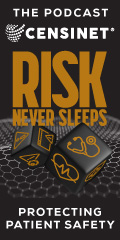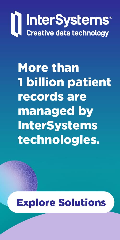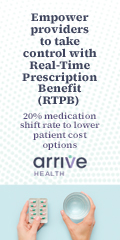The Advisory Opinion on that page states "The Veterans Health Administration (VHA) is designated a health plan... VHA's treatment activities…
Readers Write: How Automation Can Transform Healthcare Delivery
How Automation Can Transform Healthcare Delivery
By Lisa Weber, MSHA, MEA
Lisa Weber is director in industry solutions practice at UiPath of New York, NY.

A recent survey found that 90% of clinicians agreed that quality measures, including patient satisfaction, have driven change in healthcare in the last decade. The desire for better quality of care and patient experience is clear, but many healthcare organizations struggle with where to start. Consider automation.
One of the major barriers to providing the best care is the crushing amount of tedious, administrative work tasked to clinical and administrative healthcare workers. It is hard to think about a doctor’s office without hearing the constant click of a computer keyboard by every type of healthcare worker. Whether it is updating patient records, scheduling follow-up appointments, or simply taking notes, it can seem like everyone is spending more time looking at a screen than looking at the patient, which can be frustrating for both the patient and staff.
Integrating automation tools, such as software robots, can help healthcare organizations improve inefficiencies, alleviate healthcare provider workloads, and transform healthcare delivery by reclaiming time for patient engagement. The saved time ultimately leads to better, more personalized patient care. Doctors, nurses, and supporting staff would rather devote more time to patients and less to navigating and maintaining online records.
Software robots—think of them as digital assistants—can take over day-to-day tasks that involve accessing, entering, and updating systems and processes just as a human would. Much of the routine and repetitive work that medical professionals dread doing – such as data entry, revising records, checking records for compliance, and scheduling appointments – are perfectly suited tasks for digital assistants. They not only give healthcare workers ample time back in their day, but also boost productivity and workplace satisfaction, accuracy of data, and improved patient experiences.
Specific capabilities of digital assistants for the medical field include completing tasks like:
- Preparing charts ensuring that all the relevant clinical data (from multiple sources, including other physicians) is available and current.
- Making sure all paperwork is completed, signed, and up to date.
- Verifying insurance coverage and collecting any due amounts.
- Scheduling follow-up appointments, labs, and other testing.
- Initiating prior authorizations and physician referrals.
During the height of the pandemic, a hospital’s infection control department was struggling to keep up with the hundreds of people coming in every day for COVID-19 testing. As fast diagnosis and response are crucial in preventing the spread of COVID-19, nurses at the hospital needed digital assistance to not only streamline testing, but also to take the pressure off already overworked staff. Using software robots, COVID-19 test result information was processed in a fraction of the time, disseminating patient results in minutes. Overall, the hospital saved three hours a day by using automation to distribute COVID-19 test results.
Utilizing digital assistants significantly reduces the administrative workload of healthcare providers, meaning they have more time for patient engagement and other tasks that make better use of their talent and expertise. These positive effects start to snowball as less time on tedious administrative work means less burnout and turnover, and greater employee satisfaction and productivity. And all these organizational benefits gained from digital assistants in turn improve the quality of care and the patient experience.


















































































Automating insurance verification collecting due amounts is very, very maintainance intensive-insurance companies are constantly changing things up, and vare about what their changes do to provider side automation.
First, thank you for the article, I think there is potential here but do not believe we are ready for that potential. Unfortunately, the EMR vendor industry has not adopted Asimov’s laws of robotics.
Will stick with the first law
First Law
A robot may not injure a human being or, through inaction, allow a human being to come to harm.
From your bulleted lists of functions that could be handled by a digital robot:
“–Preparing charts ensuring that all the relevant clinical data (from multiple sources, including other physicians) is available and current.”
How does a robot determine relevancy of the data going into the chart from these multiple sources? I just had my annual physical and the medication list alone was a complete mess -items I hadn’t taken in years were still listed as active in the chart, because they had been pulled down from another chart. To the harm — on an ED table my trauma doc asked me about my medications — and called me out for not telling him about 5 other meds I was supposedly “on” — I had to explain that I had just reconciled my med list the prior week and I know what medications I am taking. He also asked about my allergy status and I replied NKDA, and called it out, he disagreed until I explained that the chart has an intolerance listed as an allergy — he cursed at the ‘portal’ he had retrieved the data from.
Or, how would an external data source know that a problem is current, in the following example you will see that due to reflection, refraction, distortion, and lack of entanglement a ‘problem’ that is sent to an HIE would then be loaded into another EMR, and subsequently returned to the originating EMR as a different ‘problem’. Now, I have additional clutter in my EMR that I have to sort through. you can extend this to medications, allergies, labs, etc.
Before we go down the counter argument road — I have yet to find an EMR system that has a multitude of patients specifically designed to conduct interoperability testing. Why is that important? Without those patients, associated with their specific taxonomy you will not know how data from one EMR will exchange with another EMR — and they do so badly today. I would welcome a correction to my assertion that any EMR has created patients specifically to test all components of interoperability for FHIR/CCDA/HL7.
As for measures, I also have yet to find an EMR solution that has dedicated the effort into creating the artificial patients that would deterministically exercise all of the components of a measure, and then kept them up to date. It is a very expensive proposition if the EMR was not created with automation in mind, and then had clinical analysts build out the patient attributes for measure negation, exception, and achievement. Again, I welcome anyone countering that assertion
Labs? Labs are already generally imported, and most of the systems seem to have a mechanism that would allow those lab results to return automatically to a chart — but I don’t see organizations turning that function on– generally, I think the clinicians want to review the results before accepting them into the chart. I could be wrong — again, I welcome the challenge.
Please remember that most development organizations are not connected to medicine, they are connected to their respective R&D departments — very few have ever practiced medicine of any sort, and have never had to make those classes of decisions. Having software developers write those robots should be handled with the utmost caution.
So again, thank you for the article, and hopefully it will make us think about how to get there, I just don’t think we are there yet.